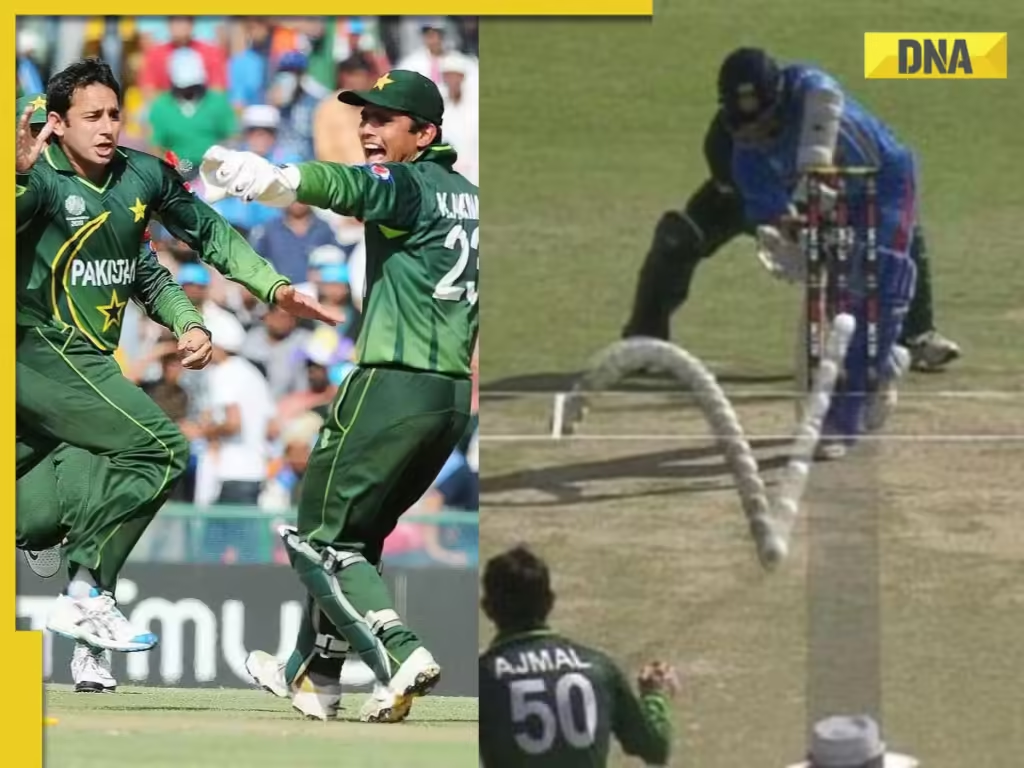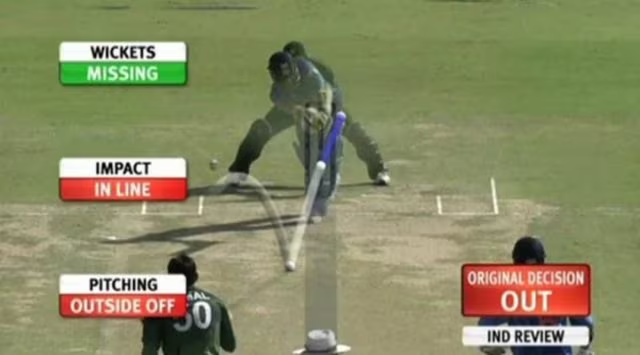
Saeed Ajmal’s take on the 2011 World Cup semi-final
talha
- 0

The semi-final of the 2011 Cricket World Cup in Mohali is one of the most thrilling and memorable matches in cricket history between India and Pakistan. However, for many cricket fans and players, it is also remembered for a controversial Decision Review System (DRS) decision that overturned an LBW call against Indian legend Sachin Tendulkar. Years later, former Pakistan off-spinner Saeed Ajmal, who bowled the ball, still questions the findings of the review.
Controversial Moment
In the 11th over of India’s innings, with Sachin Tendulkar batting on 23, Ajmal bowled a ball that hit Tendulkar’s pad in front of the stumps. On-field umpire Ian Gould immediately raised his finger, signalling out, and Ajmal, who believed in his delivery, celebrated. But Tendulkar chose to review the decision using DRS.
In a twist, the Hawk-Eye technology used in the DRS indicated that the ball would have missed the leg stump, reversing Gould’s decision and allowing Tendulkar to continue his innings. Tendulkar scored a crucial 85, later receiving the Man of the Match award and helping India to a competitive total of 260. Pakistan were eventually bowled out for 231, ending their World Cup journey.
Ajmal’s constant confusion
Saeed Ajmal has expressed his surprise at this decision several times. In an interview with AFP on Pakistan’s return to Lahore, Ajmal explained:
“I don’t know how the television replays showed my delivery turning towards the leg side because I had bowled an arm ball and it went straight,” Ajmal said. “When the batsman’s dismissal was referred to, I was 110 per cent confident.
Ajmal, known for his sharp off-spin, was convinced the ball had hit the line and was heading straight for the stumps. He believes that his delivery was not a traditional off-spinner but an arm ball, which would have straightened instead of turning towards the leg side.

Controversy intensifies: “Frames were cut”
Recently, on the Nadir Ali podcast, Ajmal courted controversy once again by claiming that two frames of the Hawk-Eye replay were left to appear as if it would miss the stumps.
“If you remember Sachin Tendulkar’s controversial call of the wicket,” Ajmal recalled. “He cut the last two frames and made the ball miss the stumps. Otherwise, it would have directly hit the middle stump.
Ajmal also mentioned that he received a lot of backlash from the Indian fans after the semi-final, despite finally getting Tendulkar’s wicket in the innings. Reflecting on the DRS decision, Ajmal expressed disappointment that a moment that he thought could have been crucial in the match was overshadowed by the reversal.
An important decision in a high-stakes match
The semi-final match put a lot of pressure and was one of the most high-stakes encounters between India and Pakistan, with a World Cup final spot on the line. Tendulkar’s innings played a crucial role in India’s win, as his 85 runs provided the backbone in their 260-run total, which was successfully defended by the Indian bowlers. This innings, compounded by the overturned decision, added to the lingering effect of the DRS controversy.
The Legacy of Tendulkar’s LBW Decision
This decision is not only remembered as a controversial use of technology But it is also remembered as a pivotal moment in the cricketing rivalry between India and Pakistan. For Ajmal and many Pakistani fans, it represents a moment that could have changed the momentum of the game. For Indian fans, it reinforces Tendulkar’s fortitude and ability to rise to the occasion at crucial moments.
Years later, Ajmal’s comments and his belief that the verdict was wrongly reversed kept the debate alive. As DRS technology continues to evolve, the 2011 World Cup semi-final serves as a reminder of the technology’s impact on cricket and the memories that linger in the minds of fans long after the last ball has been bowled.


